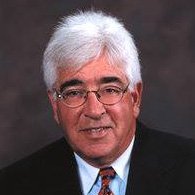Avoiding the Pitfalls of Dental Practice Transitions – Part Five
September 21, 2011
A few posts ago, I discussed strategies on how to successfully purchase a dental practice from a retiring doctor where the buyer was essentially going to be the “replacement”. The new doctor in that role would retain the staff and occupy the existing facility. But purchasing a dental practice from a retiring doctor can also be a great way to exponentially grow and add to your existing dental practice. I did this three separate times in my clinical career, and the return on investment was always more than 100% in the very first year! I wish I could say the same for my returns in the stock market. I believe the reason that the return on investment was so positive was for the following reasons.
1. Associate dentist — when I acquired these practices, I had my associate actually work in and maintain the purchased location for 12 to 18 months. That way the patients were comfortable returning to familiar surroundings with staff members they knew and trusted. Nothing had changed for them except the doctor providing dental treatment. They did not have to immediately travel to a new location. They were gradually transitioned over to our office.
2. Geography — the acquired practices were within 3 to 4 miles of my office. It would not be realistic to expect the same level of patient retention if the acquired doctors practice was not close by.
3. The size of my office — because I had enough treatment rooms, it was easy to absorb all of these new patients as they were gradually transferred. In my experience, the biggest impediment to success or growth is the lack of a proper facility. So you have to be prepared to handle the increased patient flow.
4. Economies of scale — once the old facility was closed down, it greatly reduced the overhead. One location instead of two, and eventual consolidation of staff. Patient relationships had now been established and strengthened over the 12 to 18 months by my associate, and thus patient retention was excellent even with the move to our main office.
I often see situations where a doctor wants to bring on an associate as part of a long term exit strategy, but there are not enough patients in the practice to keep the associate busy more than one or two days per week. The type of acquisition that I describe above eliminates that problem and gets the associate very busy very quickly.
Next post — another twist for acquiring an existing dental practice.
No Comments
No comments yet.
RSS feed for comments on this post.
Sorry, the comment form is closed at this time.

